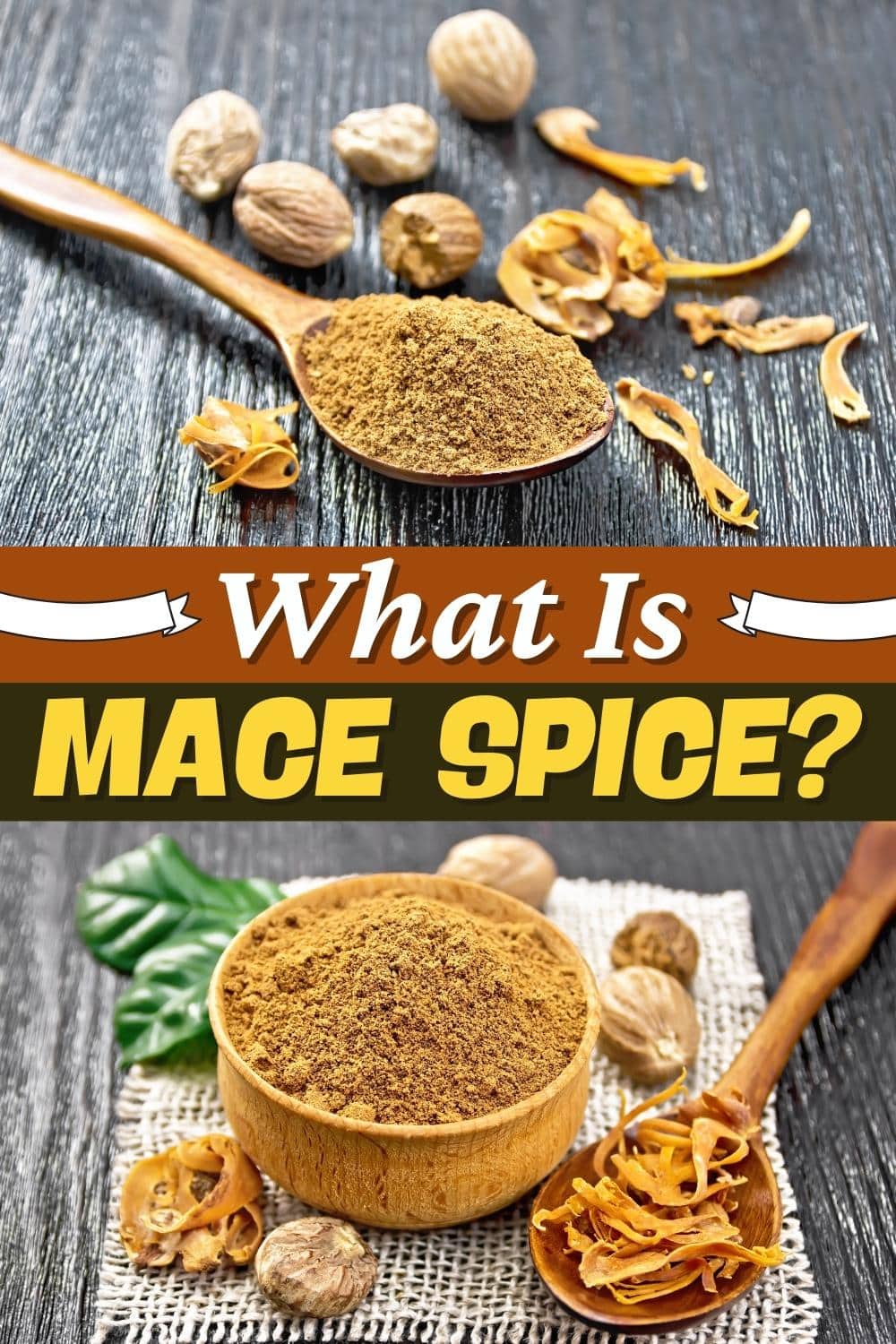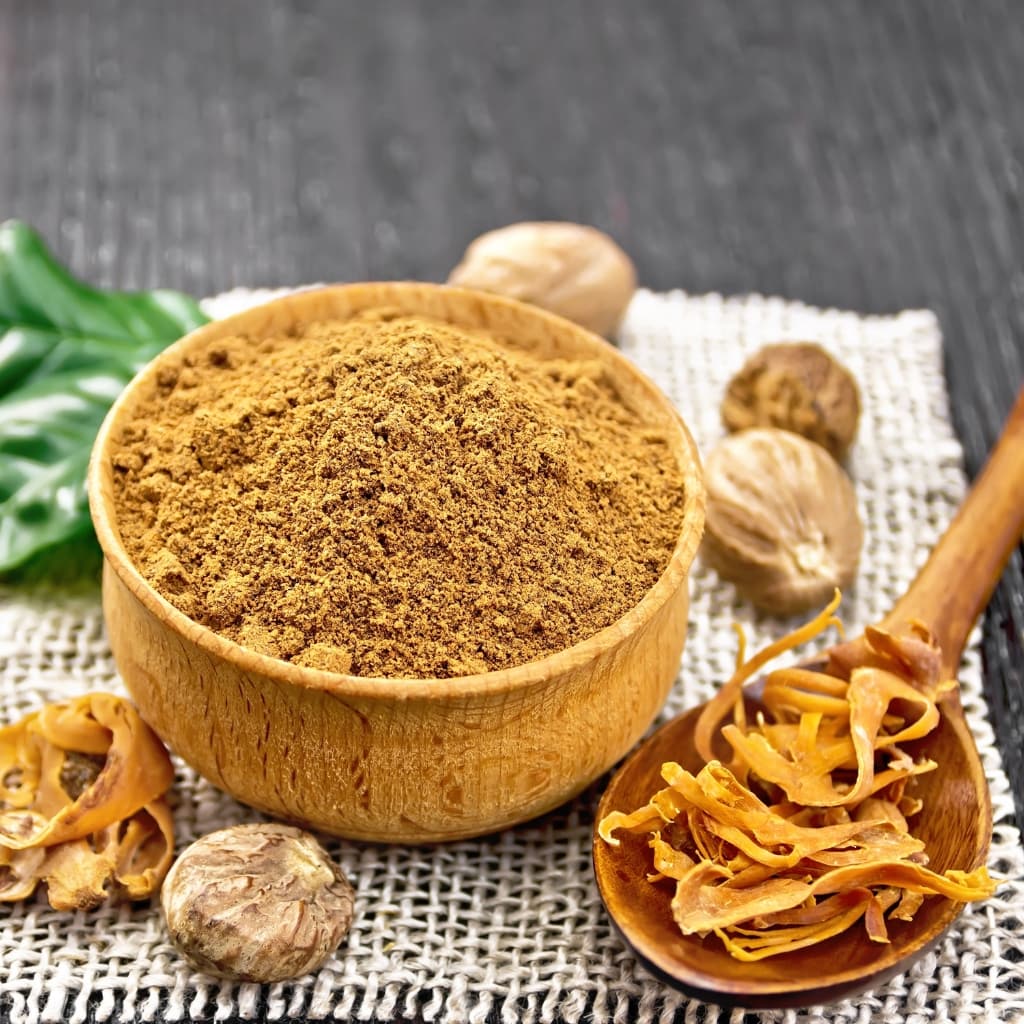What is mace spice? Mace spice is like cinnamon’s sassy cousin! It’s the vibrant red covering of nutmeg seeds.
It brings a punch of warm, sweet, and slightly spicy flavor to your dishes.
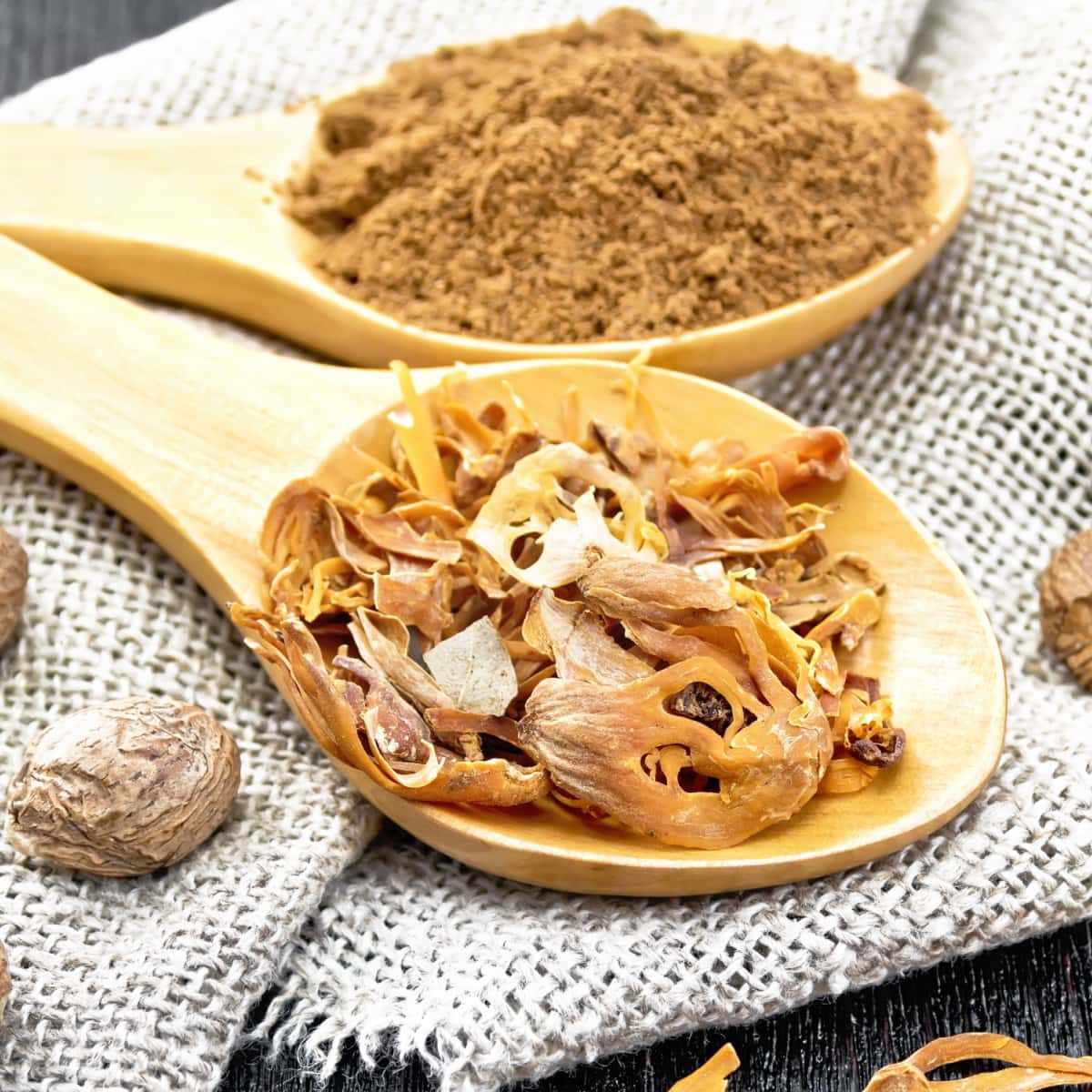
Let’s go over everything you need to know about this flavorful seasoning. From its origins and taste to its many uses in the kitchen, we’ll explore the ins and outs of mace spice.
So if you’re ready to spice up your cooking game, read on!
What Is Mace Spice?
Mace spice is a highly prized seasoning that comes from the lacy outer coating (aril) of the nutmeg seed.
It’s commonly used in a variety of cuisines around the world. You find it in India, the Middle East, Europe, Southeast Asia, and the Caribbean.
From biryanis and curries to cakes and pastries, mace has been used in cooking for centuries.
In terms of health benefits, mace spice is rich in antioxidants. It also contains vitamins and minerals such as calcium, iron, and vitamin C.
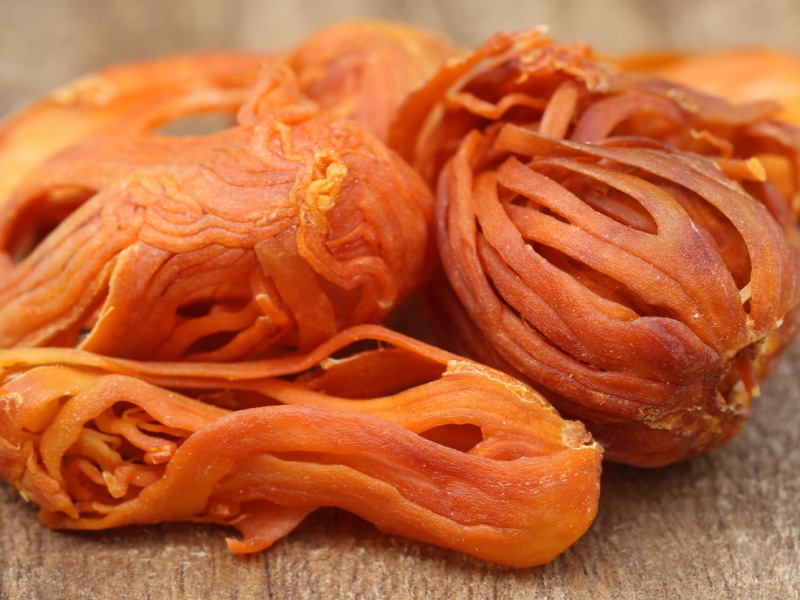
What Does Mace Taste Like?
It has a warm, sweet, and slightly spicy flavor profile. It’s similar to nutmeg, only more delicate.
It has a slightly floral and nutty aroma, with hints of cinnamon and clove.
When used in small amounts, it can add oomph to sweet and savory dishes without overwhelming the other flavors. It’s also valued for imparting dishes its bright orange, saffron-like hue.
Be careful, though, as large amounts of mace can have a slightly bitter taste.
Origins of Mace
Mace spice has a long history dating back to ancient times.
It originated in the Indonesian Molucca Islands, also known as the Spice Islands. They were a major source of valuable spices such as nutmeg and cloves.
Ancient Arab traders brought these spices to the Middle East and then to Europe. They became highly prized for both their medicinal and culinary uses.
Mace was believed to have many health benefits, such as improving digestion, relieving nausea, and reducing inflammation.
Varieties of Mace
There is only one variety of mace. But the flavor and aroma of the spice can vary based on where it is grown.
Mace cultivated in the West Indies, particularly in Grenada, is known for having a warm, nutty flavor. It has hints of cinnamon and cloves. Its blades are normally orange-yellow in color.
Mace from Indonesia, where the nutmeg tree is native, has a red-orange hue. It tends to be less pungent and more floral. It has a lighter, sweeter taste with notes of citrus.
Indian mace, also known as Javithri, has a unique flavor that’s both sweet and earthy, with a slightly bitter aftertaste.

Whole Mace vs. Ground Mace
Mace is available in two forms, whole and ground. Whole mace is known as a mace blade and is dried before being sold. Ground mace is made by grinding the dried mace blades into a fine powder.
Ready-ground mace is easier to use and more available in stores. But it deteriorates faster than whole mace blades. The essential oils in mace eventually lose their potency and become stale once ground.
If you want to experience the full flavor of mace, buy the whole blade and grind it yourself. You can do so using a spice mill, mortar and pestle, or a coffee grinder.
One blade of mace is potent enough to flavor a meal for four to six people. Note that 1 tablespoon of mace blades is equivalent to 1 teaspoon of its ground form.
Cooking With Mace
This versatile spice can be used in many ways to flavor your meals.
Cooking with Whole Mace Blades
Cook whole mace blades in oil together with other spices such as cloves, cinnamon, and cardamom. You can use the tempered oil to flavor a variety of dishes. Add the blades to flavor rice, stocks, and steamed dishes.
Cooking with Mace Powder
Mace powder is a convenient way to add mace’s distinctive flavor to your dishes. Sprinkle ground mace on fruits like peaches, apples, melons, pineapples, and nectarines. Or, add it to bakes such as pastry dough, cookies, biscuits, and cakes. Mace especially complements desserts with cherries or chocolate.
Mace powder is also a great addition to apple pie, pumpkin pie, and cottage pie. Add it to spice mixes, such as curry powder, garam masala, and ras el hanout.
Last, the spice can also be used in cheese dishes, souffles, sauces, soups, and poultry and fish recipes.
Where to Buy Mace Spice
Mace isn’t as common as other spices, so expect it to be more expensive. You can find ground mace in most grocery stores. Or check out specialty shops and international markets for whole blades. You can also easily find both whole and ground mace from various online retailers.
To ensure maximum freshness, buy the whole blades and grind them yourself with a spice grinder or mortar and pestle.
How to Store Mace Spice
If you want to keep your mace spice fresh and fragrant for as long as possible, it’s essential to store it properly.
The key is to keep it in an air-tight container and in a cool, dark spot (but not in the fridge.) Heat can cause the essential oils in the spice to break down quickly and cause it to lose color faster than usual.
Also, keep the mace away from strongly scented foods, as it can easily absorb their odors.
When stored the right way, mace can retain its flavor for up to 2 years. Although, its potency will begin to wane after 6 to 8 months. Buy small amounts at a time so you can use it while it’s still fresh and flavorful.
You’ll know your whole mace blades are still fresh when they release a bit of oil when pressed with a fingernail. Give them a sniff to see if they still have a fragrant aroma.
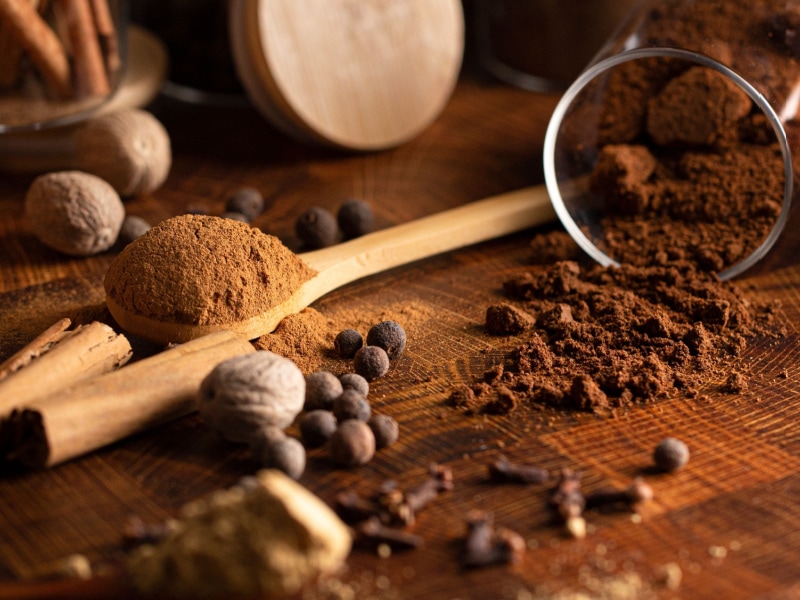
Mace Substitutes
If you can’t find mace spice, there are several substitutes you can use to achieve similar results.
The best substitutes for mace are nutmeg, allspice, ginger with cinnamon or nutmeg, and garam masala.
The choice of substitute will depend on the recipe and personal preference. But these options should allow you to achieve similar results to using mace spice.
Nutmeg
This one is naturally the best choice. It comes from the same source as mace and has a similar flavor profile. However, nutmeg has a stronger flavor than mace, so use a little less.
Ground Allspice
It also has a similar flavor profile as mace, albeit a little stronger. To avoid overpowering the dish, reduce the amount of allspice by half. Just add more if needed.
Ground Cinnamon and Ginger
These two are also good options for certain recipes, although they have a slightly different flavor profile than mace. Combining ginger with cinnamon or nutmeg can help achieve a warm and sweet taste similar to mace.
Garam Masala
This Indian spice blend contains warm and sweet spices such as cinnamon, cardamom, and nutmeg.
